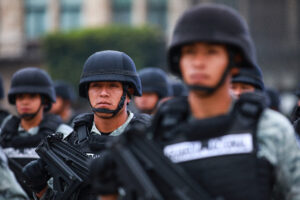By Clay Boggs and Maureen Meyer
On May 4, the body of Armando Saldaña Morales was found near the town of Acatlán de Pérez Figueroa in the Mexican state of Oaxaca. He had been shot several times, and his body showed signs of torture. Saldaña Morales lived across the border in the state of Veracruz, and worked at the radio station, “La Ke Buena 100.9 FM;” previously he had worked for several other media outlets in Veracruz—one of Mexico’s deadliest states for journalists. Saldaña Morales was the third journalist from Veracruz to be killed this year and the twelfth since the current governor, Javier Duarte, took office in 2010, demonstrating a failure to protect the work of journalists and uphold freedom of expression in the state.
But the problem is not isolated to this one state. Mexico has become one of the most dangerous countries in the world to practice journalism. According to Article 19, an organization that monitors and promotes freedom of expression worldwide, there were 326 attacks against journalists in Mexico in 2014. In that year, at least five journalists were killed as a result of their work. Largely because of these attacks, Freedom House, an international watchdog organization, has rated Mexico “Not Free” in its annual Freedom of the Press report each year since 2011.
Mexico has taken steps to address this problem; in 2012 Mexico created a national entity to protect not only journalists but also human rights defenders, which is another population facing significant levels of risk due to its work. Between January 2011 and December 2013, the Mexico-based National Human Rights Network “All Rights for All” (Red Nacional de Organismos Civiles de Derechos Humanos “Todos los Derechos para Todas y Todos”) documented 27 cases of human rights defenders who were killed as a result of their human rights work. On February 24, 2015, Alberto Almeida, a human rights defender and environmental advocate from the state of Chihuahua was shot dead by unidentified individuals; his case is just one of many threats and attacks against human rights defenders in this state.
While there has been important progress in formalizing access to the national Mechanism to Protect Human Rights Defenders and Journalists, which is meant to provide rapid government protection to threatened journalists and defenders, there is an urgent need to strengthen this body. As WOLA and eight other international human rights organizations recently highlighted in a statement, the Mechanism has continually suffered from a shortage of staff and funds, inhibiting its ability to respond in a timely and effective manner to urgent requests from human rights defenders and journalists. Until recently, most staff positions had been temporary. Recent leadership transitions, including the departure of the Mechanism’s director, exacerbate these problems. There have been significant delays in carrying out the initial risk analysis, which determines whether an individual’s situation warrants protection, measures the level of risk, and assesses which protection measures are most appropriate. A lack of clarity regarding the methodology used to determine whether a case is accepted to the Mechanism and the level of risk faced has resulted in some defenders and journalists abandoning the Mechanism.
Since its creation, the United States has provided significant support for the Mechanism. Between 2009 and 2018, the U.S. Agency for International Development (USAID) will designate more than US$35 million in funding for human rights programs in Mexico; this includes support for the Mechanism, which is primarily carried out through collaboration with Freedom House. With this USAID support, Freedom House has provided technical assistance to the Mechanism to train staff, reduce the backlog of cases, and to develop risk analysis methodology, among other measures. Nevertheless, many challenges remain to make sure that new requests are answered quickly and that the measures granted are promptly implemented and regularly evaluated to determine whether they coincide with the level of risk faced.
Government protection measures, however, are only a temporary solution: threatened defenders and journalists will only be safe when the individuals, criminal groups, or public servants who attack or harass them are brought to justice. Currently attacks are rarely investigated and almost never successfully prosecuted. Mexico’s National Human Rights Commission (Comisión Nacional de los Derechos Humanos, CNDH) reported in April 2014 that 89 percent of the attacks against media outlets and murders and disappearances of journalists that it had registered in 2013 remained unpunished. Freedom of expression will continue to be limited in Mexico unless Mexican authorities conduct thorough investigations and prosecutions of these crimes, and implement effective mechanisms to protect human rights defenders and journalists at risk.


